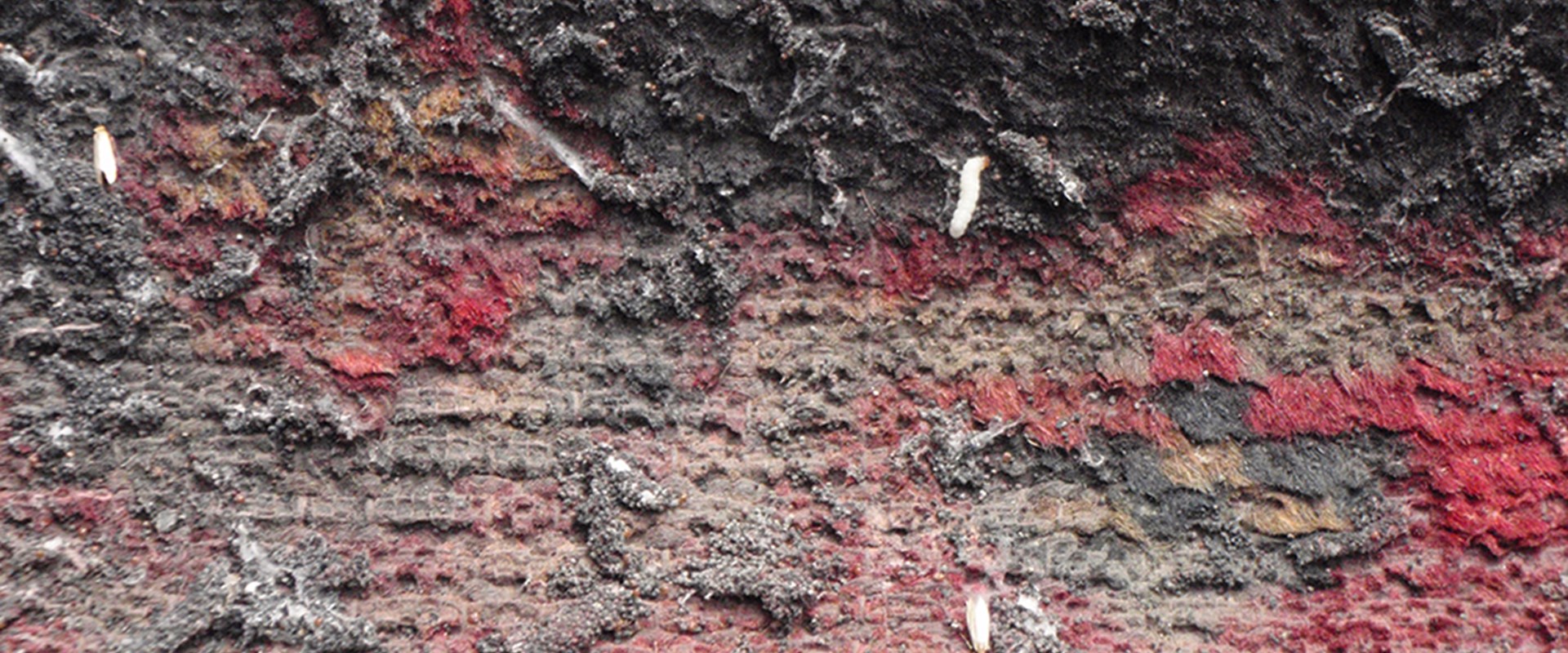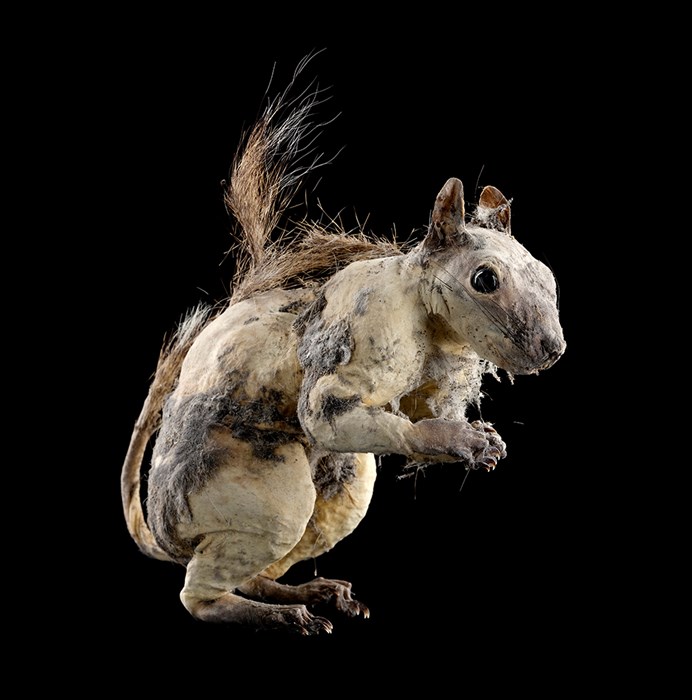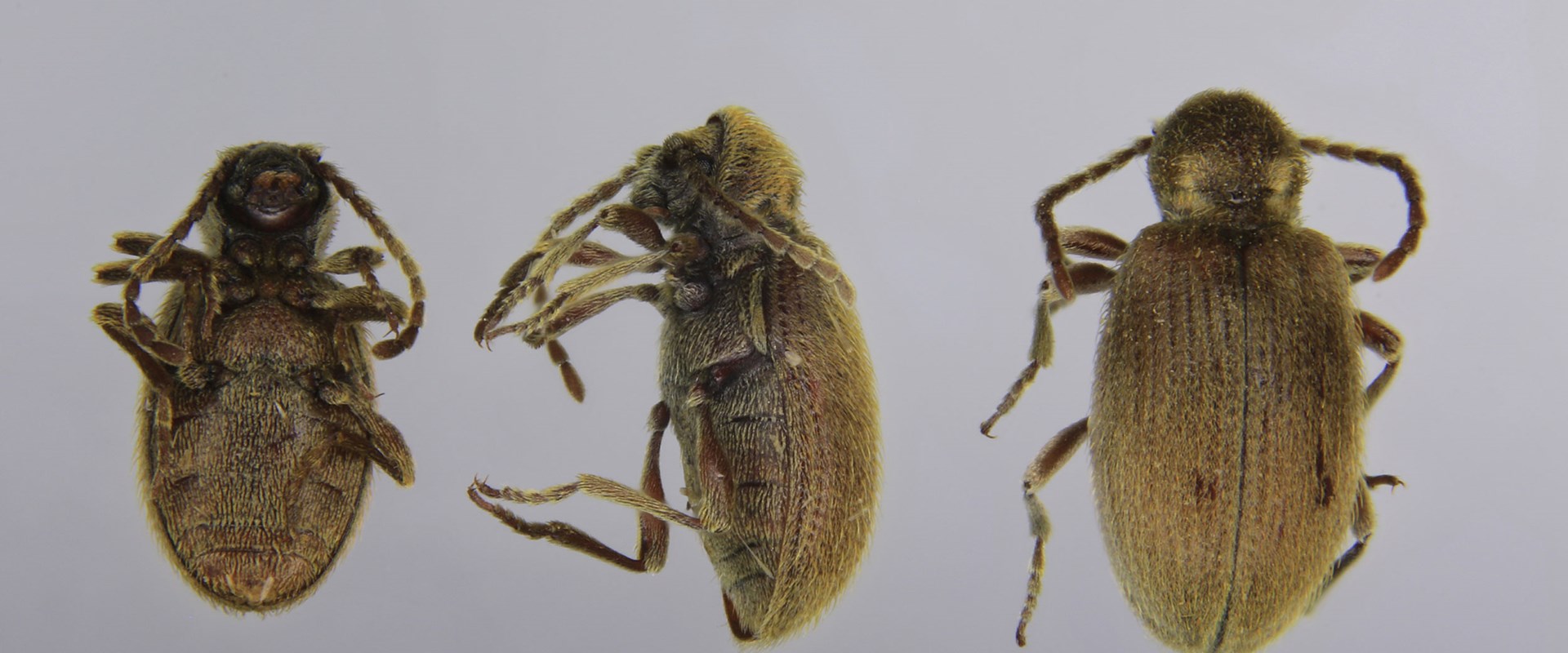Key in a search term below to search our website.
Key in a search term below to search our website.

Discovering pest species in collections can be upsetting. A good way to deal with any possible pest discoveries is to ask a number of questions about what you have found.
Firstly, is it a problem species?
You may find a large number of insects in traps and in stores. Some have no interest in eating your collections, for example spiders. The only problem they pose is being a tasty snack for some insects that may go on to eat your collection. From a housekeeping point of view we want to remove any potential food source so best to dispose of these swiftly.
Some pests may act as an indication of damp, for example woodlice (slaters). If you have lots of these it may indicate other problems with the area that could adversely affect collections. Check for water ingress, or anything that could have created a damp microclimate. It’s a good idea to routinely check buildings, and taking a bit of extra time to do this as you check pest traps gets to the heart of integrating your pest management with other aspects of collections care.

Moth damage to a taxidermy squirrel.
If you find a problem species, you need to determine if it is an active infestation or an historic problem. Things that may indicate an historic problem:
If you have a large number of insects spread throughout an area, this is more likely to indicate an active population.
It is important to determine the extent of the spread of any infestation, as treatment will need to take place in every effected area. Otherwise treated areas may easily become re-infested.
To help ascertain the spread of an insect population additional traps can be laid through the area. Consider placing them in a grid pattern to highlight any hot spots. A map of the building is helpful as it may help you consider spaces that are adjacent, that may not appear so from the ground. And don’t forget to consider the travel of pests between floors. Overlaying maps can also be useful.
The video below shows an active booklice infestation on whale bones.
To effectively tackle an infestation there are three steps:
Steps to carry out these treatments are set out below.

Low temperature treatment (freezing) is common in museums. A large number of materials can be treated with this method and it is effective as long as the low temperature is maintained throughout the object for the correct period of time, remembering that the core of the object may take some time to drop to the desired temperature.
The video below outlines how to prepare your objects for freezing:
-30°C; minimum of 72 hours maintained throughout the object
-18°C; minimum of two weeks maintained throughout the object.
At National Museums Scotland, we generally freeze for at least 5 days at -30°C to ensure this duration is met.
Low temperature treatment is suitable for a large number of materials, however there are some exceptions which shouldn’t be frozen:
To ensure no damage occurs to the object during the freezing process items must be sealed in polythene. There is a link between the air’s temperature and its ability to hold moisture. To prevent damage by humidity change and moisture migration air volume in the package should be minimised. This can be done by wrapping the polythene as closely as possible to the objects form, and using buffering materials such as tissue to fill voids.
When wrapping objects ensure:
High temperature can be used to treat infested objects. A museum grade treatment is offered by ICM (Integrated Contamination Management) which operates in London and also has a mobile unit. A specially built chamber is heated to 52°C, while RH is maintained at a suitable level. The high temperature kills all stages of the insect lifecycle. This treatment is not suitable for all material types, for example wax, or anything that may melt, and caution should be applied if objects have undergone conservation treatment, or had lacquers or polish applied to their surface.
Other heat treatments, such as those available to de-infest mattresses, etc. are not suitable for museum objects as there is no control over RH.
Insecticides can come in many different forms, for example solvent based, emulsions, smoke bombs. Many of these need a pest control specialist to carry out treatment. If you employ a contractor to carry out any of these there are some points to consider:
What is the effect of the chemical that is carrying the insecticide? For example, in a solvent based solution, what is the solvent and how will this affect any objects it comes into contact with.
Are there other additives, for example perfumes or colour, that make the product smell nice for the commercial market, but are unnecessary and potentially harmful for historic objects.
How long lasting is the treatment? The time it takes for an insecticide to degrade and become ineffective will depend on its chemical make-up. Make sure that it lasts long enough, or that re-treatment is planned to capture any adults that may emerge later (furniture beetle can take up to five years to emerge). Eggs or larvae deep inside an object may not have been affected by an initial treatment.
Always seek advice from a conservator if you are looking at treating a historic object. The ICON register is a useful resource for finding conservators.
Desiccant dusts can be used to kill insects by dehydrating them. Moisture is drawn from the insects into the dust, drying them out. This leaves the bodies of dead insects in situ, which if not cleared away, could then become a food source for other pests. These treatments should be used with caution and can be an irritant so its use must be controlled. Always follow the manufactures instructions and carry out your own risk assessment.
A dust treatment is not safe for an object, but could be considered for a space. If you are struggling to improve the environment of an area where there has been an infestation this type of treatment might be useful.
Anoxia kills by reducing the level of oxygen below a certain threshold for a period of time long enough to kill the insect by drying it out. As it tries to get more oxygen into its system moisture is lost and it desiccates.
Small scale treatments can be carried out by sealing an object with an oxygen barrier film (e.g. marvelseal) and placing oxygen scavengers (ageless) in the package. A good seal on the package (using aluminium tape) is very important or oxygen from the surrounding area will leak in. A temperature of around 22°C is also important to ensure that the insects are active enough for the treatment to work. The treatment time is around 5 weeks.
Carbon dioxide treatments must be carried out by a qualified contractor. There is a health and safety risk due to large volumes of carbon dioxide which could cause suffocation if there was to be a leak. The treatments take from 3-5 weeks and a temperature above 20°C needs to be maintained. The treatment needs to be carried out in a building which will not be accessed for the duration.
Be aware that if something is tasty to pests it may have been treated in the past.
Some historic pest treatments may leave toxic residue on objects, for example treatment of taxidermy and ethnographic material. Please be aware of the history of your objects and wear suitable PPE.
Once the objects have been treated, they will need to be returned to display or storage. However, there is no point returning them to become re-infested. The space they came from should be treated as well. The space should be deep cleaned to remove any further insect populations, and any food source they might be feeding on. Any issues with tidiness and housekeeping should be addressed. Depending on the type of space, and scale of infestation, an insecticide treatment may be necessary.
If the RH has been high, attempts to lower this will also be beneficial as many pests do not like a drier environment. Aim to keep the RH below 60% where possible.
Once you have dealt with an insect infestation you will want to do all you can to prevent its reoccurrence. Consider the IPM steps detailed throughout this training and whether you need to implement more of these in the space. We find a robust quarantine procedure and a regular schedule of cleaning post infestation works in many instances.
A Product of the Integrated Pest Management Working Group, this is the website for the American group of Heritage Pest professionals. They also have a Facebook page where they stream their conference.
A select bibliography of IPM publications and conference proceedings.
Birmingham Museums have developed this resource which includes advice and clear photos of insect pests, with examples of damage.
English Heritage offer advice and guidance on insect pests and have factsheets and posters with further information about different species.
This text by David Pinniger and Dee Lauder includes colour photos and case studies.
Written by David Pinniger, this is another key text on the subject with clear drawings and good, practical advice about setting up a pest monitoring programme.
- Birmingham Museums have a very good website called What’s Eating Your Collections? This has lots of advice and clear photos of insect pests, with examples of damage.
- English Heritage offer advice and guidance on insect pests and have some very good factsheets and posters with further information about different species.
- ‘Pests in Houses Great and Small’ by David Pinniger and Dee Lauder: this is a key text with some good colour photos and case studies.
- ‘Pest Management in Museums, Archives and Historic Houses’ by David Pinniger is another key text on the subject with clear drawings and good, practical advice about setting up a pest monitoring programme.
In addition to this self-guided training we provide other services including webinars to give you an opportunity to ask questions and meet our experts. Please contact us for more information.
Email partnerships@nms.ac.ukThese training pages are licensed for reuse under a Creative Commons Attribution-NonCommercial-ShareAlike 4.0 International License.
We are delighted for you to reuse, build on and publish the training content in these pages for non-commercial purposes. When you do, we ask that you credit National Museums Scotland and share the content under the same licensing terms.